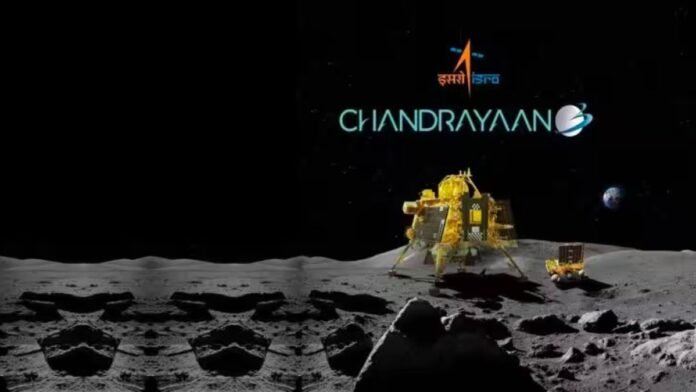Chandrayaan-3 Live Update: After it started 40 days ago from Sriharikota’s Sathish Dhawan Space Center, the Indian Space Research Organisation (ISRO)’s Chandrayaan-3 is about to land on the moon on August 23. The Vikram lander should safely touchdown on the moon at 6:04 PM IST on August 23.
Before launch, ISRO stated it could may start the mission’s automatic landing. At 5.44 PM IST, the space agency will execute it. From here on, the Vikram lander will use its computers and logic to gently land on the Moon.
The 2019 Chandrayaan-2 and Chandrayaan-3 missions wrecked the Vikram lander on the moon. The mission’s major objective is to show the space agency can land gently on the Moon.
If the mission succeeds, India will join a restricted group of nations that have soft landed on the Moon. Only the Soviet Union, China, and the US are club members. Russian astronauts attempted to land on the Moon for the first time since 1976 with the Luna-25 mission.
The Russian Space Agency said on Sunday that Luna-25 fell on the moon like Chandrayaan-2. Luna-25 wanted to be the first to land on the Moon’s south pole, which Chandrayaan-2 and 3 aimed to do. At now, only India has a horse in the event.
The Chandrayaan-3 lander’s communication was connected to the four-year-old Chandrayaan-2 orbiter after it detached from the propulsion module.
In this mission, Chandrayaan-2 helped locate a safe landing location for Chanrayaan-3. However, the former will continue to relay information between the new lander and ground station. After obtaining data from the lander, Chandrayaan-2 will send it to ISRO ground stations and partners.
According to an ISRO post on X, previously Twitter, Chandrayaan-3’s Automatic Landing Sequence (ALS) will begin when the lander module lands at the specified position at 5.44 PM IST today.
ISRO chief S Somanath said the mission upgrades are “failure-based,” meaning researchers studied Chandrayaan-2’s failures to better its successor. Below are some updates.
The new Vikram lander’s legs have been upgraded to land safely at 10.8 km/h. Of course, if Chandrayaan-2 crashes at 580 km/h, this may not help.
Greater fuel capacity: Chandrayaan-3 has more fuel than its predecessor to allow for last-minute changes. The new Vikram lander features solar panels on all four sides, unlike its predecessor.
Additional tools, better software More crucially, Chandrayaan-3 has updated its software and equipment for smooth landing. The Laser Doppler Velocimeter will measure the Lander’s speed using laser beams shot at the moon. The improved software contains redundancy to handle various circumstances.
The “15 minutes of terror” of Chandrayaan-3’s final phase before landing consist of four phases:
Rough braking phase: The lander’s horizontal velocity should reduce from 6,000 km/h to near zero for a soft landing.
Attitude holding phase: The lander will tilt from horizontal to vertical while traveling 3.48 kilometers at 7.43 kilometers above the lunar surface.
The lander will travel 28.52 kilometers horizontally to the landing area and drop its height by about 1 kilometer during the fine breaking phase, which lasts 175 seconds. Chandrayaan-2 lost control between the Attitude hold and fine-breaking.
The totally vertical lander should now descend to the Moon’s surface in what is known as the terminal descent.
Conclusion:-
ISRO’s Chandrayaan-3 is set to land on the Moon on August 23. The Vikram lander will use its computers and logic for soft landing on the moon. The mission aims to demonstrate the space agency’s ability to gently land on the Moon. If successful, India will join a restricted group of nations that have softly landed on the Moon, with only the Soviet Union, China, and the US being club members. The Chandrayaan-3 lander’s communication is connected to the four-year-old Chandrayaan-2 orbiter, which helped locate a safe landing location. The mission upgrades are “failure-based,” meaning researchers studied Chandrayaan-2’s failures to improve its successor. The new Vikram lander has upgraded its legs, increased fuel capacity, solar panels, and updated software and equipment for smooth landing. The “15 minutes of terror” phase includes rough braking, attitude holding, fine-breaking, and the final fall, which brings the fully vertical lander to the Moon.



